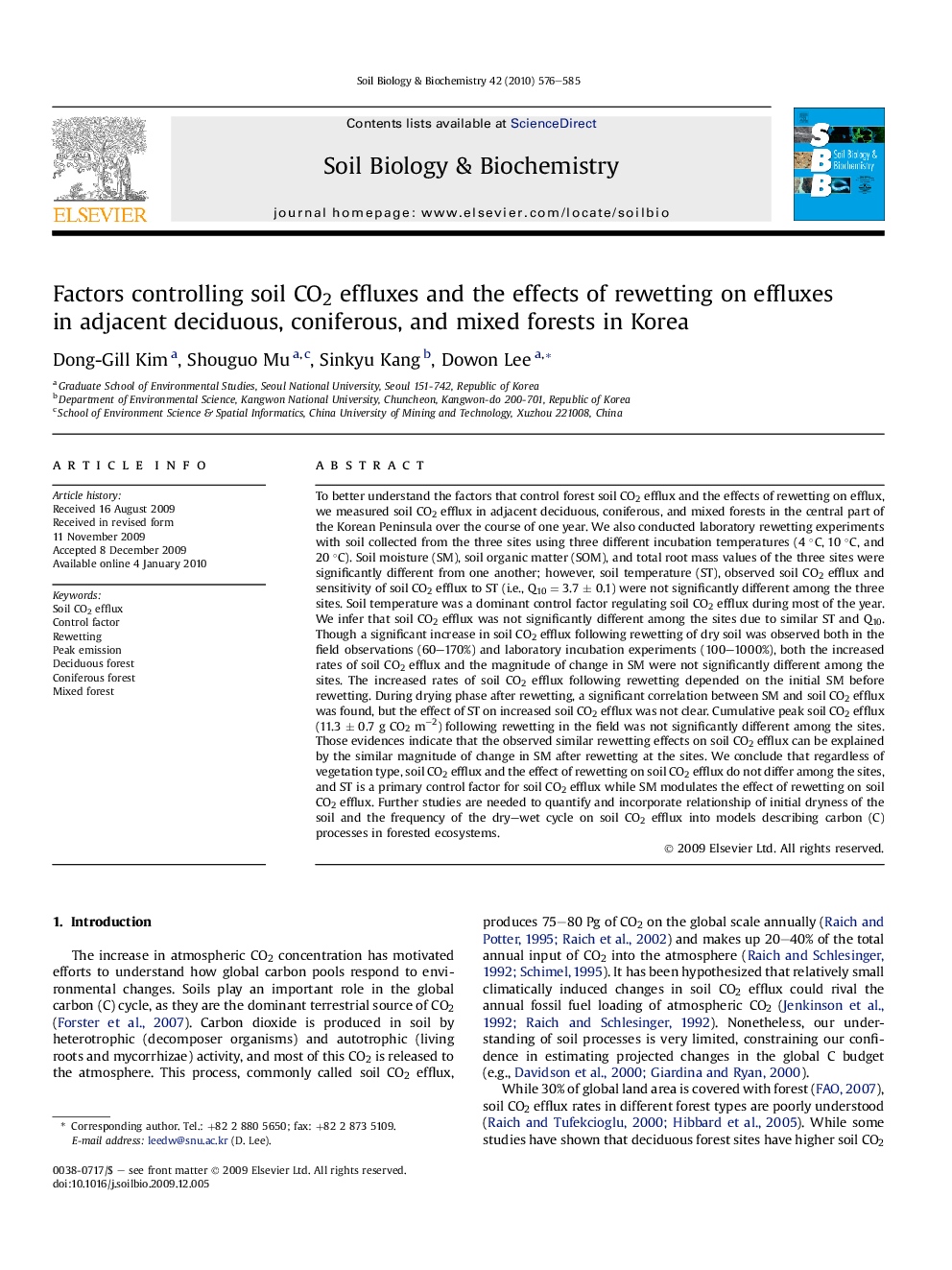| Article ID | Journal | Published Year | Pages | File Type |
|---|---|---|---|---|
| 2025055 | Soil Biology and Biochemistry | 2010 | 10 Pages |
To better understand the factors that control forest soil CO2 efflux and the effects of rewetting on efflux, we measured soil CO2 efflux in adjacent deciduous, coniferous, and mixed forests in the central part of the Korean Peninsula over the course of one year. We also conducted laboratory rewetting experiments with soil collected from the three sites using three different incubation temperatures (4 °C, 10 °C, and 20 °C). Soil moisture (SM), soil organic matter (SOM), and total root mass values of the three sites were significantly different from one another; however, soil temperature (ST), observed soil CO2 efflux and sensitivity of soil CO2 efflux to ST (i.e., Q10 = 3.7 ± 0.1) were not significantly different among the three sites. Soil temperature was a dominant control factor regulating soil CO2 efflux during most of the year. We infer that soil CO2 efflux was not significantly different among the sites due to similar ST and Q10. Though a significant increase in soil CO2 efflux following rewetting of dry soil was observed both in the field observations (60–170%) and laboratory incubation experiments (100–1000%), both the increased rates of soil CO2 efflux and the magnitude of change in SM were not significantly different among the sites. The increased rates of soil CO2 efflux following rewetting depended on the initial SM before rewetting. During drying phase after rewetting, a significant correlation between SM and soil CO2 efflux was found, but the effect of ST on increased soil CO2 efflux was not clear. Cumulative peak soil CO2 efflux (11.3 ± 0.7 g CO2 m−2) following rewetting in the field was not significantly different among the sites. Those evidences indicate that the observed similar rewetting effects on soil CO2 efflux can be explained by the similar magnitude of change in SM after rewetting at the sites. We conclude that regardless of vegetation type, soil CO2 efflux and the effect of rewetting on soil CO2 efflux do not differ among the sites, and ST is a primary control factor for soil CO2 efflux while SM modulates the effect of rewetting on soil CO2 efflux. Further studies are needed to quantify and incorporate relationship of initial dryness of the soil and the frequency of the dry–wet cycle on soil CO2 efflux into models describing carbon (C) processes in forested ecosystems.
